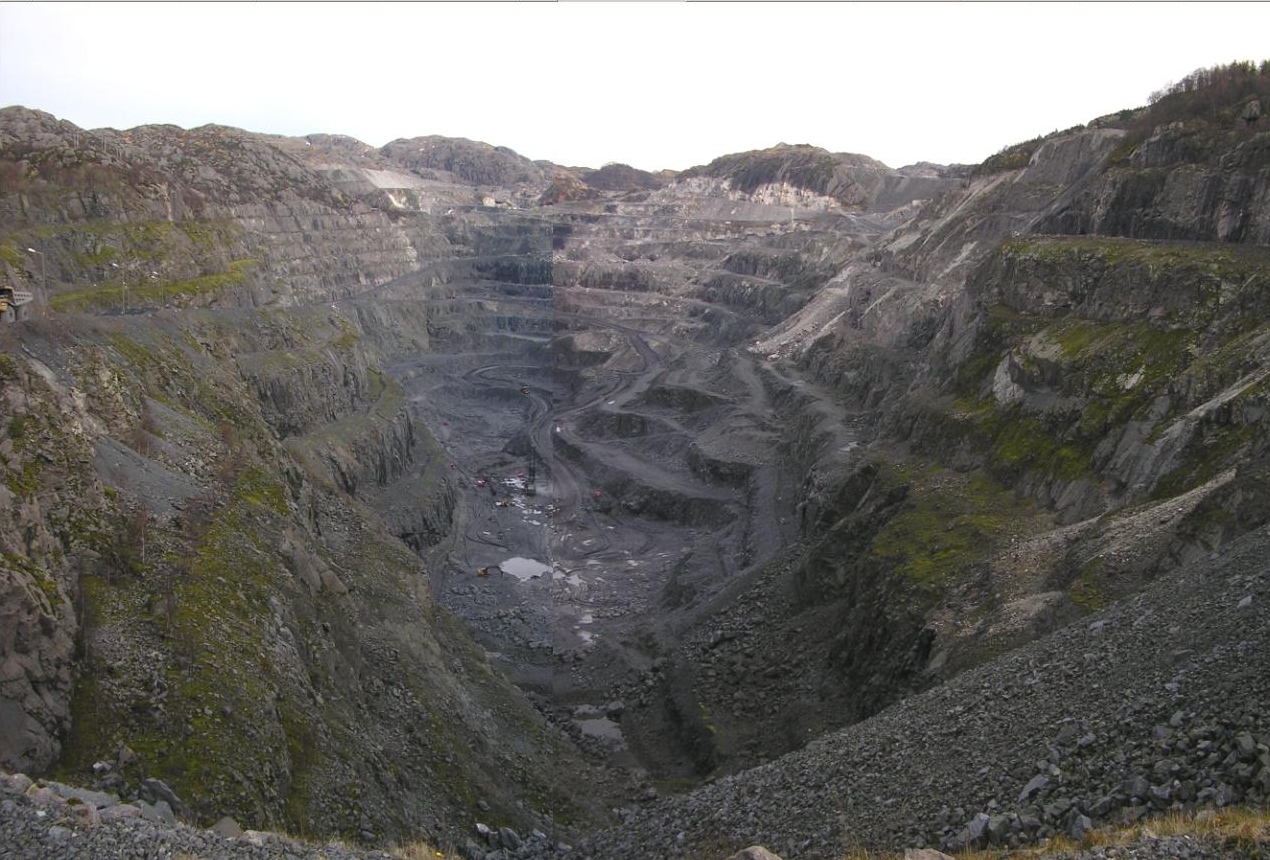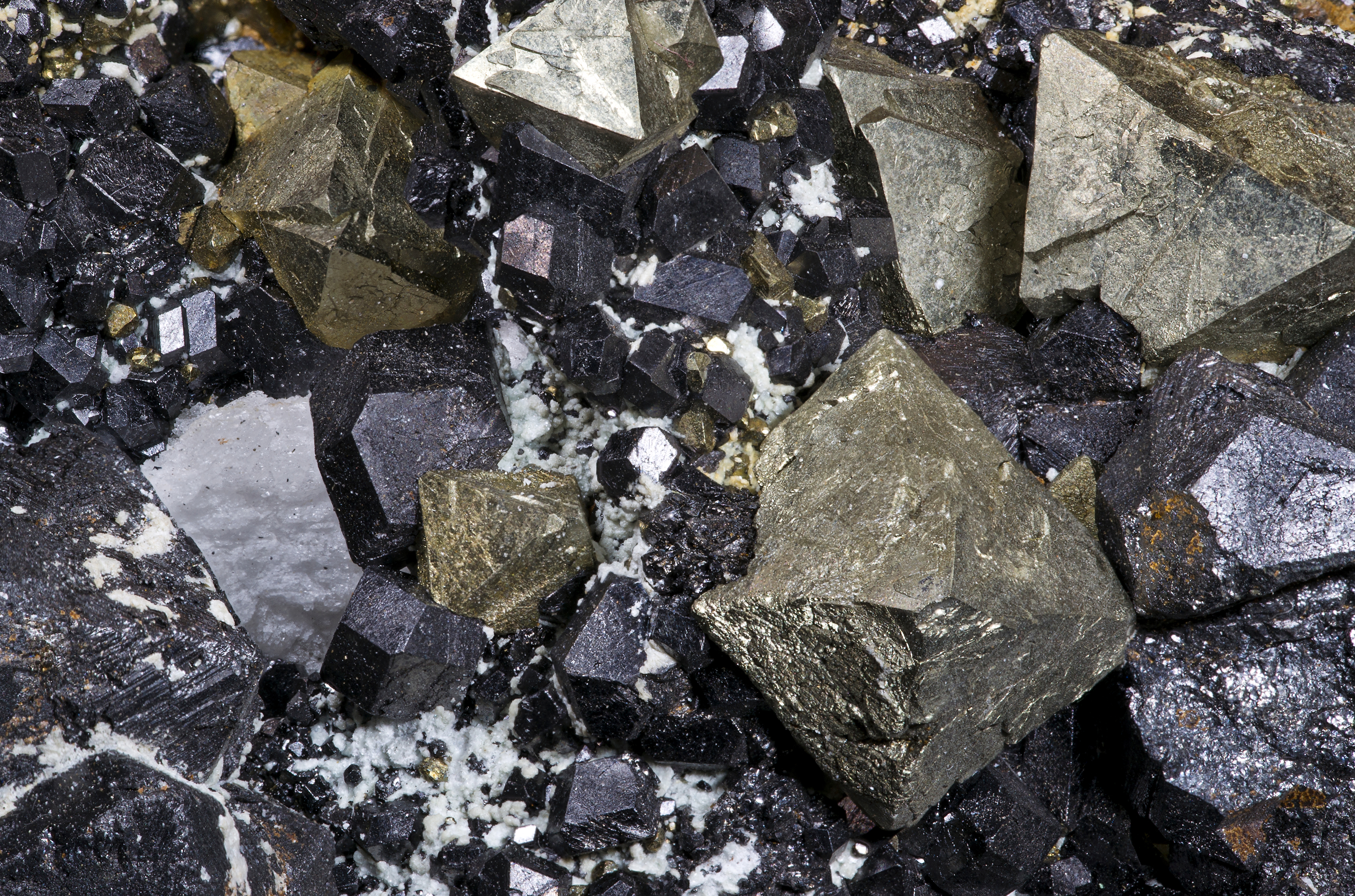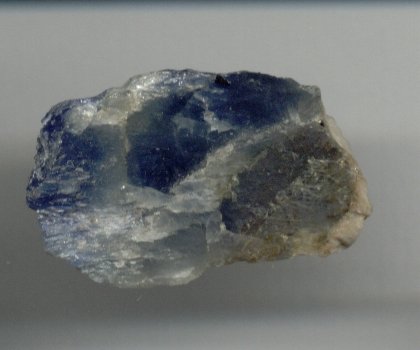|
Manganese(III) Oxide
Manganese(III) oxide is a chemical compound with the formula Mn2O3. It occurs in nature as the mineral bixbyite (recently changed to bixbyite-(Mn)IMA 21-H: Redefinition of bixbyite and definition of bixbyite-(Fe) and bixbyite-(Mn). CNMNC Newsletter, 64, 2021; Mineralogical Magazine, 85, 2021).) and is used in the production of ferrites and thermistors. Preparation and chemistry Heating MnO2 in air at below 800 °C produces α-Mn2O3 (higher temperatures produce Mn3O4). γ-Mn2O3 can be produced by oxidation followed by dehydration of manganese(II) hydroxide. Many preparations of nano-crystalline Mn2O3 have been reported, for example syntheses involving oxidation of MnII salts or reduction of MnO2. Manganese(III) oxide is formed by the redox reaction in an alkaline cell: : 2 MnO2 + Zn → Mn2O3 + ZnO Manganese(III) oxide Mn2O3 must not be confused with MnOOH manganese(III) oxyhydroxide. Contrary to Mn2O3, MnOOH is a compound that decomposes at about 300 °C to form MnO2. ... [...More Info...] [...Related Items...] OR: [Wikipedia] [Google] [Baidu] |
Ethanol
Ethanol (abbr. EtOH; also called ethyl alcohol, grain alcohol, drinking alcohol, or simply alcohol) is an organic compound. It is an Alcohol (chemistry), alcohol with the chemical formula . Its formula can be also written as or (an ethyl group linked to a hydroxyl group). Ethanol is a Volatility (chemistry), volatile, Combustibility and flammability, flammable, colorless liquid with a characteristic wine-like odor and pungent taste. It is a psychoactive recreational drug, the active ingredient in alcoholic drinks. Ethanol is naturally produced by the fermentation process of Carbohydrate, sugars by yeasts or via Petrochemistry, petrochemical processes such as ethylene hydration. It has medical applications as an antiseptic and disinfectant. It is used as a chemical solvent and in the Chemical synthesis, synthesis of organic compounds, and as a Alcohol fuel, fuel source. Ethanol also can be dehydrated to make ethylene, an important chemical feedstock. As of 2006, world produ ... [...More Info...] [...Related Items...] OR: [Wikipedia] [Google] [Baidu] |
Manganese(II) Hydroxide
Manganese(II) hydroxide is the inorganic compound with the formula Mn (OH)2. It is a white solid although samples darken quickly upon exposure to air owing to oxidation. It is poorly soluble in water. Preparation and reactions Manganese(II) hydroxide precipitates as a solid when an alkali metal hydroxide is added to an aqueous solution of Mn2+ salt:H. Lux "Manganese(IV) Hydroxide" in Handbook of Preparative Inorganic Chemistry, 2nd Ed. Edited by G. Brauer, Academic Press, 1963, NY. Vol. 1. p. 1456. :Mn2+ + 2 NaOH → Mn(OH)2 + 2 Na+ Manganese(II) hydroxide oxidises readily in air, as indicated by darkening of samples. The compound adopts the brucite Brucite is the mineral form of magnesium hydroxide, with the chemical formula Mg( OH)2. It is a common alteration product of periclase in marble; a low-temperature hydrothermal vein mineral in metamorphosed limestones and chlorite schists; and ... structure, as do several other metal dihydroxides. References {{Hydr ... [...More Info...] [...Related Items...] OR: [Wikipedia] [Google] [Baidu] |
Manganese(III) Minerals
Manganese is a chemical element with the symbol Mn and atomic number 25. It is a hard, brittle, silvery metal, often found in minerals in combination with iron. Manganese is a transition metal with a multifaceted array of industrial alloy uses, particularly in stainless steels. It improves strength, workability, and resistance to wear. Manganese oxide is used as an oxidising agent; as a rubber additive; and in glass making, fertilisers, and ceramics. Manganese sulfate can be used as a fungicide. Manganese is also an essential human dietary element, important in macronutrient metabolism, bone formation, and free radical defense systems. It is a critical component in dozens of proteins and enzymes. It is found mostly in the bones, but also the liver, kidneys, and brain. In the human brain, the manganese is bound to manganese metalloproteins, most notably glutamine synthetase in astrocytes. Manganese was first isolated in 1774. It is familiar in the laboratory in the form of t ... [...More Info...] [...Related Items...] OR: [Wikipedia] [Google] [Baidu] |
Ilmenite
Ilmenite is a titanium-iron oxide mineral with the idealized formula . It is a weakly magnetic black or steel-gray solid. Ilmenite is the most important ore of titanium and the main source of titanium dioxide, which is used in paints, printing inks, fabrics, plastics, paper, sunscreen, food and cosmetics. Structure and properties Ilmenite is a heavy (specific gravity 4.7), moderately hard (Mohs hardness 5.6 to 6), opaque black mineral with a submetallic luster. It is almost always massive, with thick tabular crystals being quite rare. It shows no discernible cleavage, breaking instead with a conchoidal to uneven fracture. Ilmenite crystallizes in the trigonal system with space group ''R''. The ilmenite crystal structure consists of an ordered derivative of the corundum structure; in corundum all cations are identical but in ilmenite Fe2+ and Ti4+ ions occupy alternating layers perpendicular to the trigonal c axis. Pure ilmenite is paramagnetic (showing only very weak attrac ... [...More Info...] [...Related Items...] OR: [Wikipedia] [Google] [Baidu] |
Néel Temperature
In physics and materials science, the Curie temperature (''T''C), or Curie point, is the temperature above which certain materials lose their permanent magnetic properties, which can (in most cases) be replaced by induced magnetism. The Curie temperature is named after Pierre Curie, who showed that magnetism was lost at a critical temperature. The force of magnetism is determined by the magnetic moment, a dipole moment within an atom which originates from the angular momentum and spin of electrons. Materials have different structures of intrinsic magnetic moments that depend on temperature; the Curie temperature is the critical point at which a material's intrinsic magnetic moments change direction. Permanent magnetism is caused by the alignment of magnetic moments and induced magnetism is created when disordered magnetic moments are forced to align in an applied magnetic field. For example, the ordered magnetic moments (ferromagnetic, Figure 1) change and become disordere ... [...More Info...] [...Related Items...] OR: [Wikipedia] [Google] [Baidu] |
Ferrimagnetism
A ferrimagnetic material is a material that has populations of atoms with opposing magnetic moments, as in antiferromagnetism, but these moments are unequal in magnitude so a spontaneous magnetization remains. This can for example occur when the populations consist of different atoms or ions (such as Fe2+ and Fe3+). Ferrimagnetism has often been confused with ferromagnetism. The oldest known magnetic substance, magnetite (Fe3O4), was classified as a ferromagnet before Louis Néel discovered ferrimagnetism in 1948. Since the discovery, numerous uses have been found for ferrimagnetic materials, such as hard drive platters and biomedical applications. History Until the twentieth century, all naturally occurring magnetic substances were called ferromagnets. In 1936, Louis Néel published a paper proposing the existence of a new form of cooperative magnetism he called antiferromagnetism. While working with Mn2Sb, French physicist Charles Guillaud discovered that the current t ... [...More Info...] [...Related Items...] OR: [Wikipedia] [Google] [Baidu] |
Iron(II,III) Oxide
Iron(II,III) oxide is the chemical compound with formula Fe3O4. It occurs in nature as the mineral magnetite. It is one of a number of iron oxides, the others being iron(II) oxide (FeO), which is rare, and iron(III) oxide (Fe2O3) which also occurs naturally as the mineral hematite. It contains both Fe2+ and Fe3+ ions and is sometimes formulated as FeO ∙ Fe2O3. This iron oxide is encountered in the laboratory as a black powder. It exhibits permanent magnetism and is ferrimagnetic, but is sometimes incorrectly described as ferromagnetic. Its most extensive use is as a black pigment. For this purpose, it is synthesized rather than being extracted from the naturally occurring mineral as the particle size and shape can be varied by the method of production. Preparation Heated iron metal interacts with steam to form iron oxide and hydrogen gas. 3Fe + 4H2O->Fe3O4 + 4H2 Under anaerobic conditions, ferrous hydroxide (Fe(OH)2) can be oxidized by water to form magnetite and m ... [...More Info...] [...Related Items...] OR: [Wikipedia] [Google] [Baidu] |
Manganese(II,III) Oxide
Manganese(II,III) oxide is the chemical compound with formula Mn3O4. Manganese is present in two oxidation states +2 and +3 and the formula is sometimes written as MnO· Mn2O3. Mn3O4 is found in nature as the mineral hausmannite. Preparation Mn3O4 formed when any manganese oxide is heated in air above 1000 °C. Considerable research has centred on producing nanocrystalline Mn3O4 and various syntheses that involve oxidation of MnII or reduction of MnVI. Reactions Mn3O4 has been found to act as a catalyst for a range of reactions e.g. the oxidation of methane and carbon monoxide; the decomposition of NO, the reduction of nitrobenzene and the catalytic combustion of organic compounds. Structure Mn3O4 has the spinel structure, where the oxide ions are cubic close packed and the MnII occupy tetrahedral sites and the MnIII octahedral sites. The structure is distorted due to the Jahn–Teller effect. At room temperature Mn3O4 is paramagnetic, below 41-43 K, it is ferrimagnetic ... [...More Info...] [...Related Items...] OR: [Wikipedia] [Google] [Baidu] |
Antiferromagnetism
In materials that exhibit antiferromagnetism, the magnetic moments of atoms or molecules, usually related to the spins of electrons, align in a regular pattern with neighboring spins (on different sublattices) pointing in opposite directions. This is, like ferromagnetism and ferrimagnetism, a manifestation of ordered magnetism. The phenomenon of antiferromagnetism was first introduced by Lev Landau in 1933. Generally, antiferromagnetic order may exist at sufficiently low temperatures, but vanishes at and above the Néel temperature – named after Louis Néel, who had first identified this type of magnetic ordering. Above the Néel temperature, the material is typically paramagnetic. Measurement When no external field is applied, the antiferromagnetic structure corresponds to a vanishing total magnetization. In an external magnetic field, a kind of ferrimagnetic behavior may be displayed in the antiferromagnetic phase, with the absolute value of one of the sublattice magneti ... [...More Info...] [...Related Items...] OR: [Wikipedia] [Google] [Baidu] |
Corundum
Corundum is a crystalline form of aluminium oxide () typically containing traces of iron, titanium, vanadium and chromium. It is a rock-forming mineral. It is a naturally transparent material, but can have different colors depending on the presence of transition metal impurities in its crystalline structure. Corundum has two primary gem varieties: ruby and sapphire. Rubies are red due to the presence of chromium, and sapphires exhibit a range of colors depending on what transition metal is present. A rare type of sapphire, padparadscha sapphire, is pink-orange. The name "corundum" is derived from the Tamil- Dravidian word ''kurundam'' (ruby-sapphire) (appearing in Sanskrit as ''kuruvinda''). Because of corundum's hardness (pure corundum is defined to have 9.0 on the Mohs scale), it can scratch almost all other minerals. It is commonly used as an abrasive on sandpaper and on large tools used in machining metals, plastics, and wood. Emery, a variety of corundum with no value a ... [...More Info...] [...Related Items...] OR: [Wikipedia] [Google] [Baidu] |
Ramsdellite
Ramsdellite (Mn4+O2) is an orthorhombic manganese dioxide mineral. It is relatively uncommon, and is usually found in deposits containing other manganese oxide crystals. Name Ramsdellite is named after the American mineralogist, Lewis Stephen Ramsdell (1895–1975). Ramsdell spent almost all his career at the University of Michigan as a professional mineralogist. Ramsdellite was one of the new phases he first recognized in the "black manganese oxide" minerals. It was later named in his honour by Michael Fleischer and W. E. Richmond, who fully described the mineral in 1943. The mineral is also called Groutellite. Chemistry and crystallography The chemical formula for Ramsdellite is MnO2. The empirical formula is Mn4+O2. Ramsdellite has the same chemistry as the more common pyrolusite, but is orthorhombic where pyrolusite is tetragonal. Ramsdellite belongs to the Orthorhombic crystal system and Dipyramidal crystal class. Properties: Classification The Dana classification is 4. ... [...More Info...] [...Related Items...] OR: [Wikipedia] [Google] [Baidu] |



